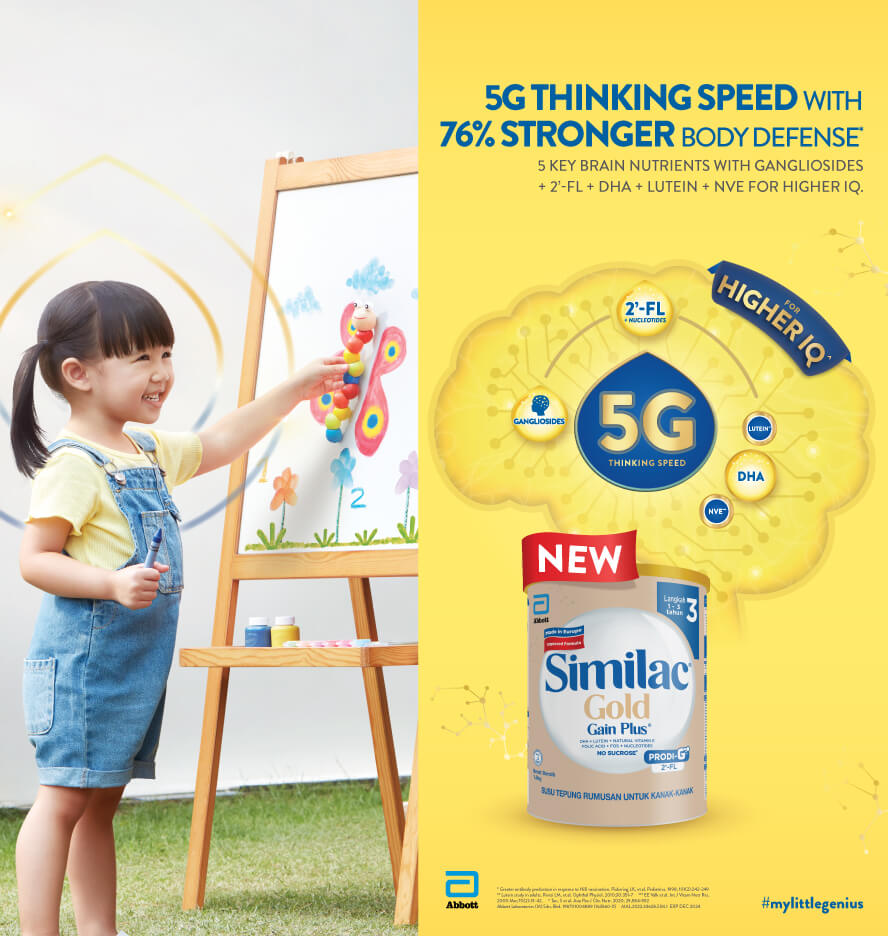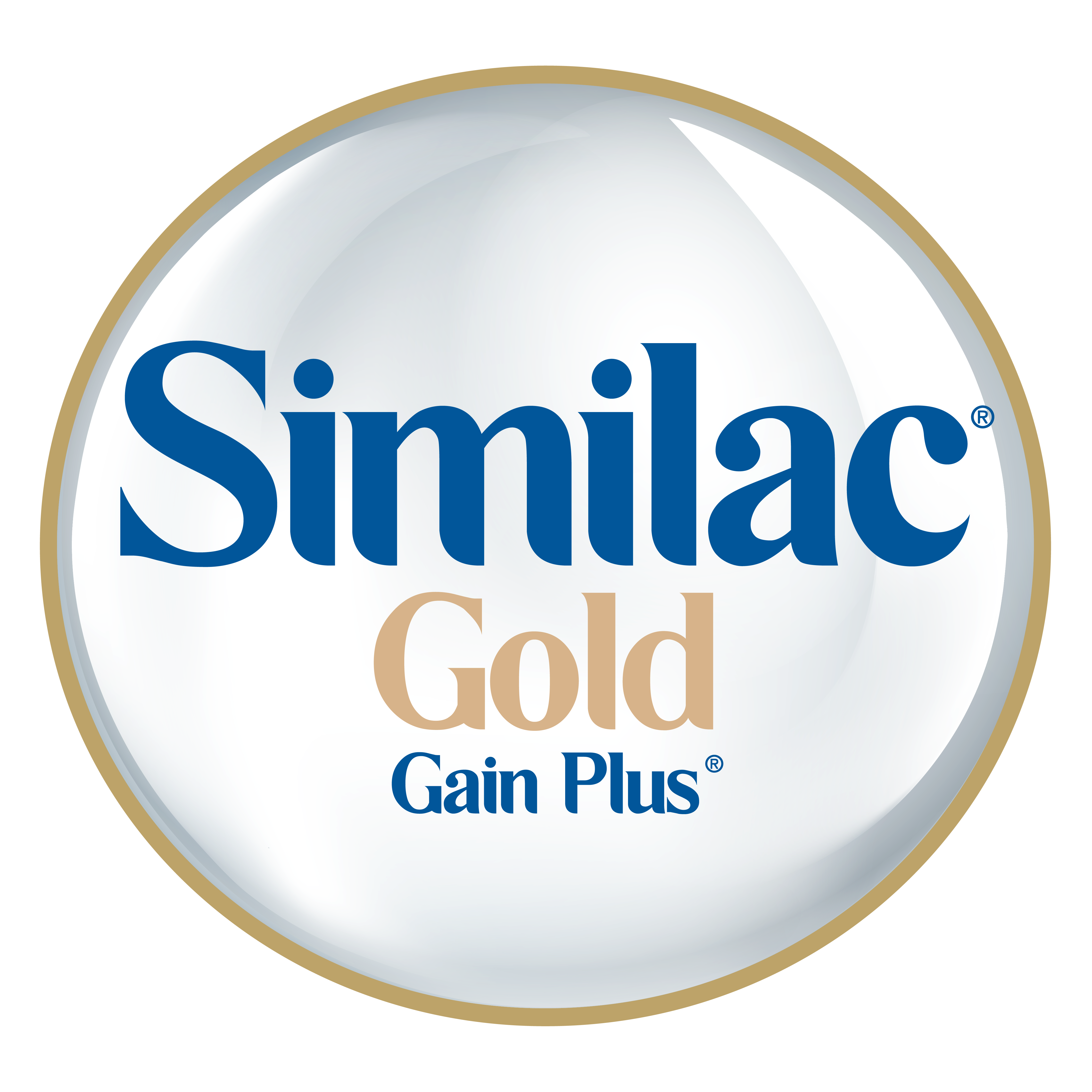INGREDIENTS: Skim milk, lactose, VEGETABLE OILS: (high oleic sunflower oil, soybean oil, coconut oil), whey protein concentrate, buttermilk powder, fructo-oligosaccharide (FOS), MINERALS: (calcium carbonate, tricalcium phosphate, sodium citrate, potassium chloride, calcium hydroxide, ferrous sulfate, potassium citrate, zinc sulfate, manganese sulfate, copper sulfate, magnesium chloride, potassium iodide, sodium selenate), flavors, 2'-fucosyllactose (2'-FL) (oligosaccharide), VITAMINS: (ascorbic acid, sodium ascorbate, niacinamide, calcium d-pantothenate, RRR-alpha tocopheryl acetate, Vitamin A palmitate, thiamine hydrochloride, riboflavin, pyridoxine hydrochloride, folic acid, phylloquinone, d-biotin, cholecalciferol, cyanocobalamin), soy lecithin, m-inositol, docosahexaenoic acid (DHA) from Schizochytrium sp., choline chloride, taurine, choline bitartrate, ascorbyl palmitate, arachidonic acid (AA) from M. alpina oil, NUCLEOTIDES: (cytidine 5'-monophosphate, disodium uridine 5'-monophosphate, adenosine 5'-monophosphate, disodium guanosine 5'-monophosphate), mixed tocopherols, CAROTENOIDS: (lutein, beta carotene)
Growing up milk
Similac Gain Plus Gold
- Title
- Similac® Gold Gain Plus® Step3
- Description
-
Similac® Gold Gain Plus® is scientifically formulated with 5 key brain nutrients (Gangliosides, 2’-FL + Nucleotides, DHA, Lutein & Natural Vitamin E) to support your child’s brain development - Higher IQ For Faster Learning.
Available In:
600g BIB, 1.2kg BIB, 1.8kg BIB, 3.0kg BIB, 900g Can, 1.8kg Can.
SIMILAC® GOLD GAIN PLUS® STEP 3 SUPPORTS
HIGHER IQ FOR FASTER LEARNING1,9
HIGHER IQ FOR FASTER LEARNING1,9

5 key brain nutrients to support your child’s brain development
HIGHER IQ FOR FASTER LEARNING1,9
Formulated with 5 key brain nutrients Gangliosides, 2’-FL, nucleotides, Lutein, DHA and Natural Vitamin E (NVE) to support higher IQ and support immune function
- Connect 100 billion brain cells for better learning and higher IQ1,9
- Increase memory performance2,3
Less sick days for better learning opportunities
- Better immune function and +76% stronger body defense5 with 66% less illnesses4
Lutein: 12% better brain processing speed5
DHA: Supports brain for high IQ development6,7
NVE: Protect DHA From damage8
No added sucrose
+ sugar refers to sucrose (contains lactose)
Nutritional Table
View Full Nutritional List
| Nutrition Information/ Maklumat Pemakanan | Unit / Units | Per 100g Setiap 100g | *Setiap Hidangan / Per Serving (205ml)* |
Tenaga / Energy | kcal (kJ) | 485 (2032 ) | 151 (634) |
Protein | g | 18.22 | 5.68 |
Lemak / Fat | g | 22.83 | 7.12 |
Mono Tak Tepu / Monounsaturated | g | 9.47 | 2.95 |
Poli Tak Tepu / Polyunsaturated | g | 4.74 | 1.48 |
Asid Linoleik / Linoleic Acid (Omega 6) | g | 4.14 | 1.29 |
Asid α-Linolenik / α-Linolenic Acid (Omega 3) | g | 0.33 | 0.10 |
Asid Arakidonik / Arachidonic Acid (AA) | mg | 9 | 3 |
Asid Dokosaheksenoik / Docosahexaenoic Acid (DHA) | mg | 27 | 8 |
Tepu / Saturated | g | 7.30 | 2.28 |
Asid Trans Lemak / Trans Fatty Acid | g | 0.167 | 0.052 |
Karbohidrat / Carbohydrate | g | 50.92 | 15.89 |
Frukto-oligosakarida / Fructo-oligosaccharides (FOS) | g | 1.32 | 0.41 |
2'-fucosyllactose (2'-FL) (Oligosaccharide) | g | 0.13 | 0.04 |
Taurina / Taurine | mg | 31.6 | 9.9 |
Kolina / Choline | mg | 111.8 | 34.9 |
Nukleotida / Nucleotides | mg | 24.3 | 7.6 |
Lutein | mcg | 138 | 43 |
Beta Karotena / Beta Carotene | mcg | 72 | 22 |
Vitamin / Vitamins |
|
|
|
Vitamin A | mcg RE (IU) | 422 (1408) | 132 (439) |
Vitamin D3 | mcg (IU) | 8.55 (342) | 2.67 (107) |
Vitamin E | mg a-TE (IU) | 6.2 (9.2) | 1.9 (2.9) |
Vitamin K1 | mcg | 26.3 | 8.2 |
Vitamin C | mg | 71.7 | 22.4 |
Vitamin B1 (Tiamina/Thiamin) | mg | 0.66 | 0.21 |
Vitamin B2 (Riboflavin) | mg | 0.99 | 0.31 |
Niasin / Niacin | mg | 3.42 | 1.07 |
Vitamin B6 | mg | 0.33 | 0.10 |
Asid Folik / Folic Acid | mcg | 105 | 33 |
Vitamin B12 | mcg | 3.03 | 0.95 |
Biotin | mcg | 26.3 | 8.2 |
Asid Pantotenik / Pantothenic Acid | mg | 3.62 | 1.13 |
Mineral / Minerals |
|
|
|
Natrium / Sodium | mg | 250 | 78 |
Kalium / Potassium | mg | 697 | 217 |
Klorida / Chloride | mg | 520 | 162 |
Kalsium / Calcium | mg | 783 | 244 |
Fosforus / Phosphorus | mg | 454 | 142 |
Magnesium | mg | 51.3 | 16.0 |
Ferum / Iron | mg | 6.78 | 2.12 |
Zink / Zinc | mg | 4.61 | 1.44 |
Kuprum / Copper | mcg | 368 | 115 |
Mangan / Manganese | mcg | 118 | 37 |
Selenium | mcg | 12.5 | 3.9 |
Iodin / Iodine | mcg | 72.4 | 22.6 |
* Standard reconstitution is 152g powder diluted to 1 litre with water. For a standard serving of 205ml, use 3 level scoops (enclosed in can) (approximately 31.2g) of powder and 180ml of water. One can of x g will prepare approximately x standard servings.
Preparation Method
Suggested Serving : 3 servings per day
Step 1
Wash your hands thoroughly before preparing the feed.
Step 2
Thoroughly wash feeding bottle and all utensils to be used in preparing the feed.
Step 3
Sterilise all feeding utensils in a steriliser or boil in water for 5 minutes.
Step 4
For one serving, add 3 leveled scoops of milk powder into 180ml of lukewarm water that has been previously boil and stir well.
Step 5
Shake until completely dissolved. Test temperature and feed.
Step 6
Discard unused feed within 1 hour.
Reminder: If not used immediately, prepared formula should be stored in the refrigerator at 2°C – 4°C and used within 24 hours.
Comparison Table
Related Articles
Screen Childs Best Friend
- Main Image
-

- Title
- Screen - Child's best friend
- Short Description
-
When deciding how to give screen time to your child, be sure to find a balance between mobile device and free play to ensure their health is maintained.
- Detail Page Path
Healthy Skin Happy Munchkins
- Main Image
-

- Title
- Healthy Skin, Happy Munchkins
- Short Description
-
Learn the tips and tricks to helping your child stay rash-free and comfortable in their own skin. Keep the joy of having cuddles with your little one.
- Detail Page Path
Toddler Milestone
- Main Image
-

- Title
- Toddler Milestone
- Short Description
-
For mothers who are new to parenting, here is a list of important milestones to look out for when parenting children from the ages of 18 to 24 months.
- Detail Page Path
TRY NEW SIMILAC GOLD GAIN PLUS®
MAL.2023.37331.SIM.1 EXP MAY 2025
Reference:
1. Tan S, et al. Asia Pac J Clin Nutr. 2020, 29, 584-592
2. Xia, Y et al. Asia Pac K Clin Nutr. 2021 Sep; 30(3):401-414.
3. Jeon, Y et al. Am J Chin Med. 2016;44(3):489-514.
4. Reverri EJ, et al. Nutrients 2018.10, 1346
5. Pickering LK, et al. Pediatrics. 1998;101(2):242-249
6. Bovier ER, et al. PLoS One. 2014.Vol 9;Issue 9;e108178
7. Renzi LM, et al. Ophthalmic Physiol opt, 2010. 30: 351-357 _
8. Goehring KC, et al. J Nutr. 2016 Dec; 146(12):2559-2566. Epub 2016.
9. Gurnida DA, et al. Early Hum Dev. 2012;88:595-601
